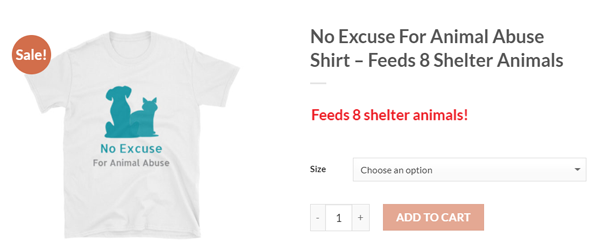Educational Series: Bees – Nature’s Heroic Pollinators are Under Attack
On almost any warm, sunny day from spring through early fall, in any outdoor location with flowers and a landscape free of chemical pesticides, you can hear bees buzzing as they fly from blossom to blossom. From big, furry, black-and-yellow bumble bees; to smaller yellow-orange honey bees; to tiny bee species smaller than a mosquito, their work as nature’s most important pollinators allows countless ecosystems to function.
Seven out of ten flowering plant species rely on animal pollinators to reproduce. Of these pollinators, by far the most important are bees. Bees’ small size makes them ideally suited to crawling deep inside flowers to get at the sugary nectar and nutritious pollen. Along the way, a bee’s furry body become coated in excess pollen that it then transports to the next plant it visits. When pollen scrapes off a bee’s back into another flower, it has a chance to fertilize the blossom and ensure the survival of the next crop of flowering plants.
Most natural ecosystems–from tropical rainforests to mountain meadows–depend to a large extend on bees for their survival. But people rely on these amazing insects just as much. Approximately thirty percent of the foods and beverages we consume are pollinated by insects, mainly bees. These include countless fruits, vegetables, and nuts that would quickly go extinct without bees to spread their pollen from flower to flower. If all bees were to disappear, we would be left without many of the healthiest and most important foods in our diets.
While many people have some idea of the importance of bees, few realize just how diverse and amazing the variety of different bee species is. The bee most of us are familiar with is the honey bee, a species introduced to North America from Europe. Honey bees live in massive colonies, each one made up of thousands of non-reproducing workers and a queen who gives birth to all other bees in the colony. Because entire colonies can be transported from place to place in artificial nests, honey bees are especially popular with large-scale farming operations. Commercial beekeepers can bring movable colonies to a field when crop plants are in bloom, releasing thousands of pollinators just when they are needed most.
Honey bees are also the bees most frequently featured in the media. But while they certainly are important, all the public attention given to honey bees obscures the fact that there are thousands of other, native bee species in North America, and they are even more essential to the proper functioning of ecosystems.
Most non-agricultural plants are pollinated by native bees, not honey bees. There are about 4,000 native bee species in the United States, ranging from big, heavy-bodied bumble bees to tiny bees most people never notice. Bumble bees are by far the most famous of our native bees, and their habits are also the most similar to honey bees. Like honey bees, bumble bees live in colonies with workers and a single queen. However, while honey bee colonies may number tens of thousands of individuals, bumble bee colonies are more likely to have a few hundred workers. Furthermore, individual honey bee colonies persist year after year, with workers and queens huddling in a semi-dormant state inside the nest through the cold winter season. Bumble bee colonies, on the other hand, last only a single season. In fall as the weather grows cold, all bumble bees die off except for the queens, who overwinter in sheltered spots until spring at which time each queen finds a new nest site, lays eggs, and gives birth to a new colony.
There are slightly under 50 species of bumble bees in North America. Most of the rest of the thousands of native been species on this continent belong to various types of solitary bees–species that, unlike honey bees and bumble bees, do not live in large colonies with distinct queen and worker castes. Female solitary bees raise their larvae on their own. Some dig burrows in loose soil in which to rear their brood, while others take advantage of small, ready-made holes in rotting logs. And while some native bees have light and dark stripes reminiscent of honey or bumble bees, others look radically different.
Certain native bee species are brilliant metallic blue-green in color, while others are nondescript gray. Many are small enough that they aren’t likely to be noticed at all by the average human visitor to a garden or forest meadow. Not only that, since they don’t look like the typical honey bee, the majority of solitary bee species may not even be recognized as bees even if they are noticed. However, none of this detracts from the important role they play in our environment.
Not only do native bees pollinate most native flowers, they are also increasingly being recognized as hugely important to agriculture. Over the last several years, honey bee colonies across the country have suffered from Colony Collapse Disorder, an ailment that causes most workers to suddenly abandon the nest. While the causes of Colony Collapse Disorder are still incompletely understood, disease pathogens and pesticide exposure are thought to play a role. The susceptibility of honey bees to this mysterious ailment has highlighted the importance of other pollinators who can serve as a natural backup to the efforts of honey bees. Unfortunately, native bees are also in trouble.
While honey bees suffer from Colony Collapse Disorder, native bees face a more varied series of threats including pesticide use, habitat loss, and disease. Most native bees require nesting sites like rotting wood or patches of open, sandy soil–and these are just the types of natural features that tend to be eliminated from neatly manicured gardens or farmland. The widespread use of insecticides, particularly a group of common pesticides called neonicotinoids, is also a major threat. Once sprayed on plants, neonicotinoids are absorbed into the plant’s tissue including the pollen and nectar bees eat. The use of neonicotinoids, in combination with changes to bee habitat and the spread of pathogens, is believed by scientists to have contributed to declines in bee populations in many parts of the world.
Fortunately, there are plenty of ways we can help bees–and the plants they pollinate–thrive. On an individual level, gardeners can avoid using pesticides and create bee habitat by incorporating patches of open soil and fallen wood into the landscape. Meanwhile, in response to public pressure, some governments are taking action. The European Union recently implemented a ban on three of the worst bee-killing neonicotinoids, while France has banned the entire list of pesticides belonging to this group. Similarly, three of the most harmful neonicotinoids have been banned in Canada. The United State government has not taken any similar action at the national level, but on January 1, 2018 the nation’s first state-level ban on neonicotinoids took effect in Maryland.
Companies have also begun taking action to save bees, largely in response to consumer-driven campaigns. In the U.S. retailers like Home Depot, Lowe’s, and Kroger are in the process of implementing bans on some or all neonicotinoids used on plants sold in their gardening departments. Major companies in Australia have taken similar steps.
So how can you help bees? In addition to planting a bee-friendly garden and supporting agricultural growers who don’t use pesticides, get involved in calling for action at the government level. Contact your state and local representatives and urge them to follow Maryland’s lead in banning neonicotinoids. And support the preservation of natural parks and landscapes in your community that provide native bees with habitat. With enough action from individuals, corporations, and governments we can ensure a healthy future for thousands of bee species and the plants and ecosystems that depend on them.
Photo credit: Reinhold Möller
Wait, there’s one more step:
Over 1,402,880 Animal Shelter Meals Donated So Far –
Upgrade to a Premium Membership to get a free No Excuse For Animal Abuse shirt, feed shelter animals with the Educational Series and Meal Wheel, sign 100’s of petitions with one-click, remove ads, and promote your favorite petitions to millions!
7 day money-back guarantee for new members. Zero risk.
Premium Membership comes with the following perks:
• Get a free No Excuse For Animal Abuse shirt.
• Feed shelter animals by spinning the Meal Wheel.
• Sign 100’s of petitions with one-click.
• Feed shelter animals with the Educational Series quizzes.
• Remove ads and vote on which petitions are displayed to millions of people.
Our Guarantee:
Cancel your subscription for any reason within 7 days and we’ll refund 100% of your money, as long as you’re a first time member.
Frequently Asked Questions:
How are the animal shelter meals donated?
We donate shelter meals through Rescue Bank because they research all shelters, maintain equitable distribution, and track the meals from their facilities all the way to the rescue groups. This ensures that the donation will be utilized in the most efficient and impacting way.
Why don’t we just donate meals without providing any perks like the Meal Wheel?
We’ve been at this since 2008 and have learned that to really make a difference, we need to get people excited and engaged. Our mission is a serious one, but our methods are playful and educational. We’re serious about doing good, but also want to make it fun.
Who are we?
We are a family of sites that works to protect animals, the environment, and more. Our sites include AnimalPetitions.org and ForceChange.com. We’ve been at this for over a decade and are dedicated to protecting and defending animals and the environment. If we can have some fun and improve the world, then we’re accomplishing our goal!

We’ve Been Doing This for Over a Decade and Others Have Taken Notice:

Testimonials:
“Thank you SO much for the premium feature of being able to sign multiple petitions with one click. Many of us go for hours at a time signing each and every petition and crying as we read them. I have often wished for a way to sign my name on every petition because I passionately support them and they all need our voice. This is the best thing – thank you very much!” -Karilyn K., Premium Member“This is just the most amazing wonderful service that makes me so happy! To be able to feed shelter pets is just the greatest feeling. Thanks again for this, and for all you do for the most innocent and helpless among us, the animals. I’m lovestruck.” Sandra Z., Premium Member
“I love the upgrade option and I am so glad I did it.....it enables me to stand with you and many others to fight for the justice these precious souls deserve! We are their voice!!!! And....I adore helping to feed them as well! The spin the wheel game is fun....and I like doing it everyday to help! Keep up the wonderful work....and I know....every click makes a difference!” Dorothy B., Premium Member
“I am so excited to become a Premium Member and to have one-click signing, as I was spending countless hours signing petitions...not that I mind doing it, but my goodness, there sure are a lot of them. I always hope that my signature somehow helps, because these people that abuse/torture animals, need to be put away. As you can tell, that is my passion, I have such a heart for animals, and I want to be their voice.” Darlene R., Premium Member
“Thank you so much! I love being a premium member and spinning that wheel every day, especially when I land on 4 or, best of all, 5 meals. Thank you for all you do, we are all so grateful for you.” Sandy T., Premium Member
“With deepest Aloha, You have no idea how grateful I am for you!” Jan L., Premium Member
“Thank you for the Premium Membership option. I really appreciate that I can sign multiple petitions with one click. It's great! Thank you for the work you do.” Ashley H., Premium Member
“I absolutely love the Educational Series!” Yvonne L., Premium Member
"I am a premium member and religiously sign every petition. THANK YOU for this platform. I also vote for the petition nearest my heart, sometimes voting globally, sometimes I am caught by an individual animal's plight. What gives me great pleasure is noting that almost always, the percentages have no more than a 6-7% spread. It means that, overall, everyone cares about all of the petitions ALMOST EQUALLY! LOL, I also spin that wheel, and when I get 4 or 5 meals, I dance around the room! I have long maintained that what someone does to a helpless animal, they will do to a weaker human if they think that they can get away with it. Those who abuse, no matter how many legs their victims have, should be punished to the fullest extent of the law." Rebecca E., Premium Member
"I LOVE LOVE LOVE my Premium Membership! Everything and anything I can do to help animals and contribute to justice in the world makes me very happy!" Jan L., Premium Member
"Thank you, I love what you do. My friends and I love the membership because we can sign so many more petitions that we may never had heard of. Keep up the good work." Virginia G., Premium Member
Still have questions? Email us: animalpetitions@forcechange.com
[easy-social-share buttons=”facebook,mail” morebutton=”1″ counters=0 fullwidth=”yes” query=”yes”]


